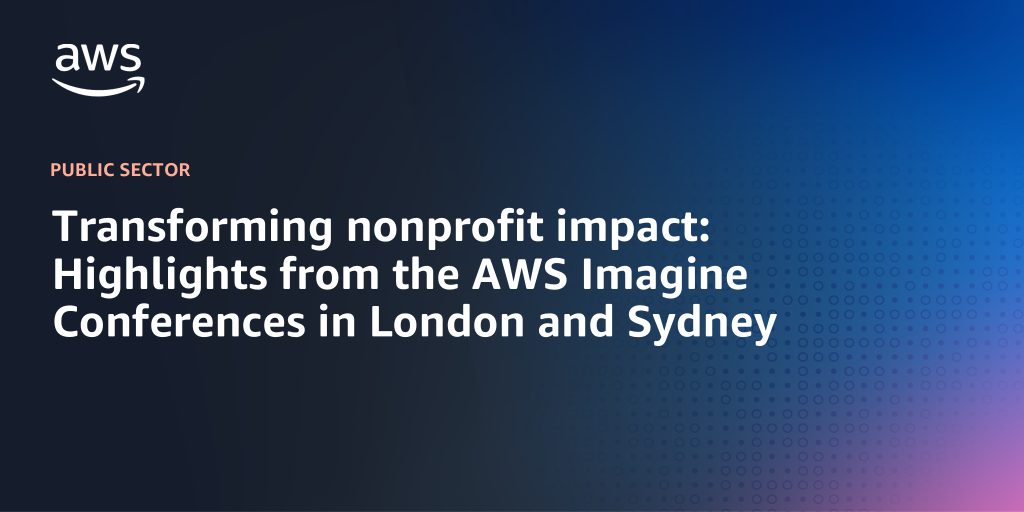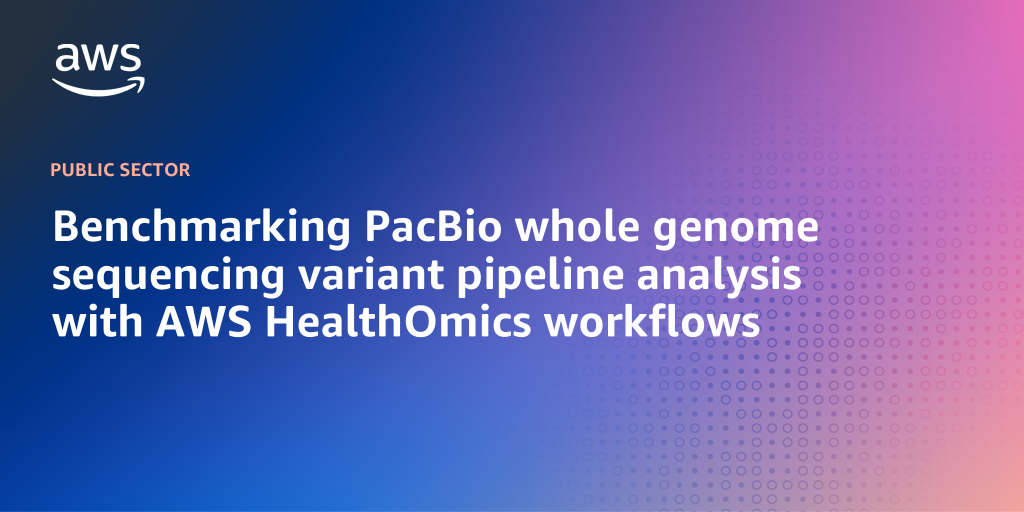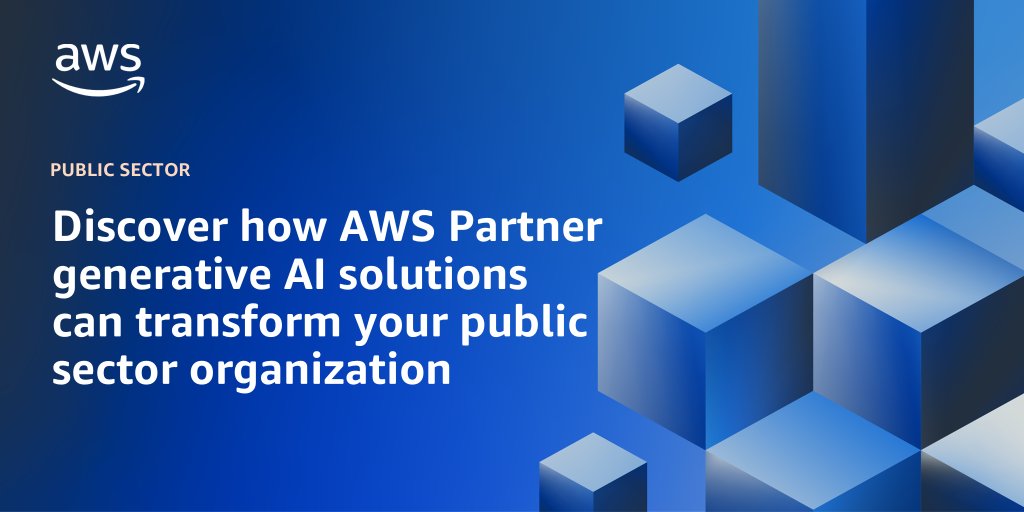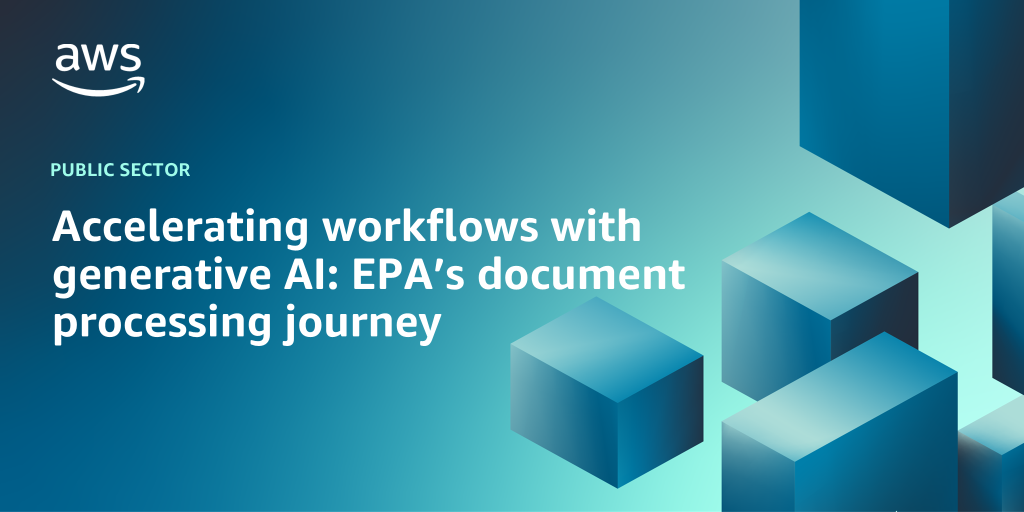AWS Public Sector Blog
Category: Artificial Intelligence
Transforming nonprofit impact: Highlights from the AWS Imagine Conferences in London and Sydney
In this post, we explore some of the stories shared by public sector innovators at the AWS Imagine for Nonprofits conferences in London and Sydney, which illustrate the transformative power of cloud technology when applied thoughtfully to address significant challenges and advance mission delivery.
Benchmarking PacBio whole genome sequencing variant pipeline analysis with AWS HealthOmics workflows
This post demonstrates PacBio’s whole genome sequencing variant pipeline implementation on AWS HealthOmics, offering performance optimization insights and evidence-based recommendations for cost-effective deployment at scale based on extensive benchmarking.
Discover how AWS Partner generative AI solutions can transform your public sector organization
To help IT leaders get started with generative AI, we’re launching a new content hub featuring AWS technology partner solutions designed specifically for public sector IT leaders. Read this post to learn more.
Renaissance uses generative AI on AWS to accelerate personalized learning at scale
As a global leader in K12 educational technology (EdTech) solutions, Renaissance supports over 16 million students across more than 100 countries with a mission to improve learning outcomes for all students, regardless of ability or background. Its data-rich platform helps educators make informed decisions and deliver personalized learning experiences for students. Read this post to discover how Renaissance worked with AWS to develop a scalable, human-in-the-loop solution powered by generative AI.
Accelerating workflows with generative AI: EPA’s document processing journey
In this post, we highlight how two United States Environmental Protection Agency (EPA) leaders are reimagining EPA’s mission delivery with intelligent document processing (IDP), powered by AWS.
Transforming public safety in Thailand: Deploying AI police cyborgs with AWS Cloud solutions
As public gatherings grow in size, the Royal Thai Police (RTP) must extend their reach and optimize their resource allocation to ensure safety across high-density event areas. To address this challenge, an innovation solution was deployed: an AI-powered police robot, the AI Police Cyborg 1.0.
Building an AI-powered scientific meeting transcription platform with AWS
In this post, we explore how to build a sophisticated meeting transcription and analysis platform using AWS services, designed specifically for the scientific community. Our solution combines the power of AWS Transcribe, Amazon Bedrock, and other Amazon Web Services (AWS) services to create an intelligent tool that transforms how researchers document and analyze their discussions.
How federal agency leaders are using AWS tools to improve efficiency
Federal agencies are using cloud-based tools to increase productivity, reduce resource use, and improve their ability to efficiently serve the public. This article highlights the pioneering leaders forging new paths into cloud-based government.
PixelGuard: Advancing healthcare data privacy through AI-driven de-identification system for medical imaging research
PixelGuard—built on AWS—is an advanced software solution that deidentifies medical images while preserving clinical relevance and efficacy. It uses over 75 state-of-the-art AI-driven models capable of detecting and redacting multilingual, multi-orientation text across all major formats, alongside configurable metadata anonymization. Read this post to learn more.
Pearson at AWS DC Summit 2025: Transforming education through AI-powered learning solutions
During the 2025 AWS Summit in Washington, DC keynote address, Amazon Web Services (AWS) and Pearson showcased the strength of their expanded collaboration to accelerate the development of AI-powered, personalized learning solutions.









